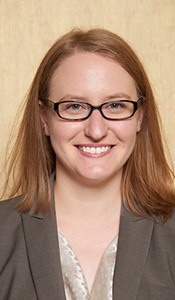Program Information
Dual-Energy CT Monochromatic Image Consistency Across Vendors and Platforms
M Jacobsen*, C Wood , D Cody , UT MD Anderson Cancer Center, Houston, TX
Presentations
WE-FG-207B-10 (Wednesday, August 3, 2016) 1:45 PM - 3:45 PM Room: 207B
Purpose: Although dual-energy CT provides improved sensitivity of HU for certain tissue types at lower simulated energy levels, if these values vary by scanner type they may impact clinical patient management decisions. Each manufacturer has selected a specific dual-energy CT approach (or in one case, three different approaches); understanding HU variability among low monochromatic images may be required when more than one dual-energy CT scanner type is available for use.
Methods: A large elliptical dual-energy quality control phantom (Gammex Inc.; Middleton, WI) containing several standard tissue type materials was scanned at least three times on each of the following systems: GE HD750, prototype GE Revolution CT with GSI, Siemens Flash, Siemens Edge, Siemens AS 128, and Philips IQon. Images were generated at 50, 70, and 140 keV. Soft tissue and Iodine HU were measured on a single central 5mm-thick image; NIST constants were used to calculate the ideal HU for each material. Scan acquisitions were approximately dose-matched (~25mGy CTDIvol) and image parameters were held as consistent as possible (thickness, kernel, no noise reduction).
Results: Measured soft tissue (29 HU at 120 kVp) varied from 28 HU to 44 HU at 50 keV (excluding one outlier), from 21 HU to 31 HU at 70 keV, and from 19 HU to 32 HU at 140 keV. Measured iodine (5mg/ml, 106 HU at 120 kVp) varied from 246 HU to 280 HU at 50 keV, from 123 HU to 129 HU at 70 keV, and from 22 HU to 32 HU at 140 keV.
Conclusion:Measured HU in standard rods across 3 dual-energy CT manufacturers and 6 scanner models varied directly with monochromatic level, with the most variability was observed at 50 keV and least variability at 70keV. Future work will include additional scanner platforms and how measurement variability impacts radiologists.
Funding Support, Disclosures, and Conflict of Interest: This research has been supported by funds from Dr. William Murphy, Jr., the John S. Dunn, Sr. Distinguished Chair in Diagnostic Imaging at MD Anderson Cancer Center.
Contact Email:

